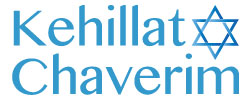Ha’Azinu 5781 – Turn! Turn! Turn! (To Everything There Is a Season)
“Turn! Turn! Turn! (To Everything There Is a Season)” was written by Pete Seeger in the late 1950s and first recorded in 1959. The lyrics – except for the title, which is repeated throughout the song, and the final two lines – consist of the first eight verses of the third chapter of the Book of Ecclesiastes.
To every thing there is a season, and a time to every purpose under the heaven:
A time to be born, and a time to die; a time to plant, a time to reap that which is planted;
A time to kill, and a time to heal; a time to break down, and a time to build up;
A time to weep, and a time to laugh; a time to mourn, and a time to dance;
A time to cast away stones, and a time to gather stones together;
A time to embrace, and a time to refrain from embracing;
A time to gain that which is to get, and a time to lose; a time to keep, and a time to cast away;
A time to rend, and a time to sew; a time to keep silence, and a time to speak;
A time of love, and a time of hate; a time of war, and a time of peace.
These lines are open to myriad interpretations, but Seeger’s song presents them as a plea for world peace because of the closing line: “a time for peace, I swear it’s not too late.”
Tomorrow we’re going to read Parshat Ha’azinu. It is the next to the last chapter of the Torah, we read it most years on the first Shabbat following Rosh Hashanah like we are this very year.
As endings merge with new beginnings, Ha’Azinu focuses on the fact that Moses is about to pass away. It is his time / his turn to die. The Parshah concludes with G‑d’s instruction to Moses to ascend the summit of Mount Nebo, from which he will behold the Promised Land before dying on the mountain. “For you shall see the land opposite you; but you shall not go there, into the land which I give to the children of Israel.”
Ha’Azinu is described as ‘listen in’.
Moses uses a song to deliver his final message. Why a song? Music connects to the spirit, the heart, and the mind in a ways plain words often miss.
Moses begins dramatically but gently, calling heaven and earth to witness what he is about to say. He speaks to a theme that has been there from the beginning. It is one we’ve heard before: God, creator of the universe, made a world that is fundamentally good. It is humans, granted freewill as God’s image and likeness, who introduce evil into the world, and then suffer its consequences. Moses insists that when trouble and tragedy appear, we should search for the cause within and not blame God. God is upright and just. The change, the turn, should be found in us.
Why this song? Is it the right or wrong message for the occasion?
Haazinu is always read in the month of the holidays, in the month that contains both the days of awe, Rosh Hashanah and Yom Kippur, as well as the days of joy, Sukkot and Simchat Torah. In the beginning of the month we face the pain. We think about the sins of the past year, we think about the pain of separation caused by sin, the pain of separation from those (G-d and/or people) we sinned against. In the days of awe, we overcome the pain, we return, we reconnect. We often realize that no matter how much pain we caused, no matter how far we tried to run, most are —waiting for us to return, waiting to accept us, waiting to embrace us.
We rediscover joy with Sukkot and Simchat Torah. We discover that all parts of the journey are parts of the same song.
No matter where we are in life remember that we are in the middle of our own song. If we keep singing, keep playing the notes, we will discover the music, we will discover the words.
As we prepare for Yom Kippur and continue to reflect on our lives and actions – let’s recall there is a time for every season – a time for every purpose – a time to keep silence, and a time to speak; a time of love, and a time of hate; a time of war, and a time of peace.
May you and your loved ones be signed in the book of life for a wonderful year.
Songs were common and always heard in the Holy Temple. Every day besides Shabbat, while the priests would offer the daily offerings, the Levites would accompany the service with music and songs of praise from King David’s book of Psalms. All of the songs sung were joyous, and were meant to imbue the service with a spirit of joy.
On Shabbat, as the priests offered the Musaf offering, the additional offering for the Shabbat, the Levites offered up the Song of Haazinu. They would sing one section per week, completing the song every six weeks.

